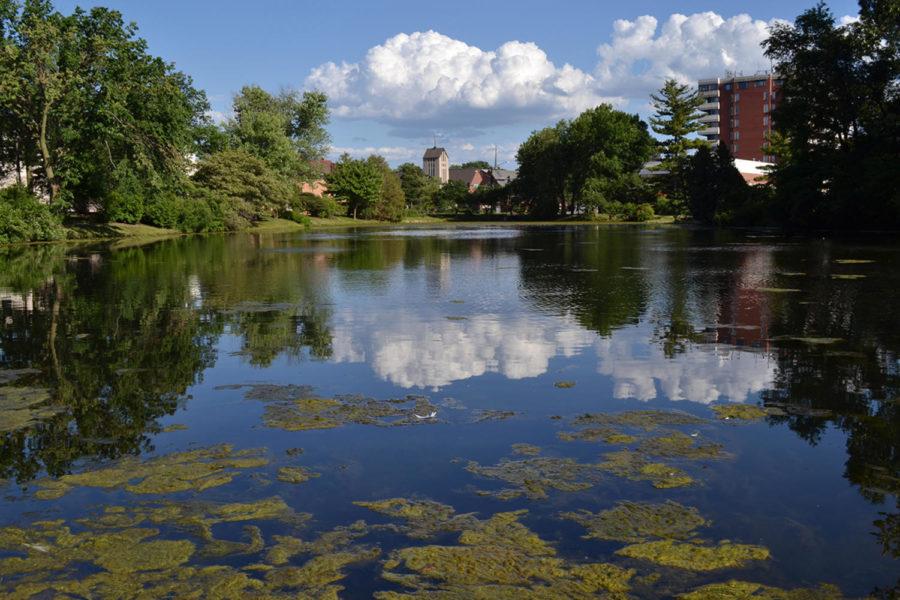Algae in Lake Laverne positive sign
Photo: Brian Achenbach/Iowa State Daily
Algae is typically autotrophic organisms, ranging from unicellular to multicellular forms, such as the giant kelps that grow to 65 meters in length. Algae are important as primary producers of organic matter at the base of the food chain.
June 25, 2013
The algae in Lake LaVerne may look unappealing, but the unsightly green stuff is actually the sign of a healthy, sustainable ecosystem.
The lake’s maintenance crew has switched over from copper sulfate to aluminum sulfate to help bind phosphorus to the bottom of the lake, so it is unavailable to algae that could bloom out of control.
“Using aluminum sulfate, along with refraining from fertilizing the grass around the lake, is helping the lake stay sustainable and healthy.” said Les Lawson, the Facilities and Planning Management campus services manager. “We’re not killing the algae, we’re preventing it from growing out of control.”
Without the algae sapping vital nutrients from the lake, other life in LaVerne can bloom in its stead. “We’ve been seeing a lot more diversity in plant and animal life in the lake now,” Lawson said. “The lake is healthier and can support it.”
Chris Strawhacker, facilities planning and management landscape architect, agreed: “We’ve been doing testing before and after the alum treatments for the past two years, and have found that it knocks down phosphorus levels by 50%.”

















